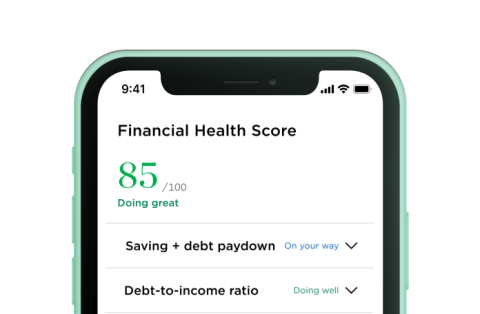Can I Have a 401(k) and an IRA?

Many or all of the products featured here are from our partners who compensate us. This influences which products we write about and where and how the product appears on a page. However, this does not influence our evaluations. Our opinions are our own. Here is a list of our partners and here's how we make money.
The investing information provided on this page is for educational purposes only. NerdWallet, Inc. does not offer advisory or brokerage services, nor does it recommend or advise investors to buy or sell particular stocks, securities or other investments.
Can you have both a 401(k) plan and an IRA? The simple answer is yes, and many people do. Using a traditional IRA and 401(k) plan could provide tax-deferred savings for retirement, and even offer some tax breaks for contributing too.
However, keep in mind that each retirement account has annual contribution limits, and that your IRA contribution could be limited by both your modified adjusted gross income amount, and whether you or your spouse already have a 401(k) plan.

on Capitalize's website
Can I contribute to a 401(k) plan and a traditional IRA?
Both the 401(k) plan and an IRA have annual contribution limits set by the IRS. In 2024, the 401(k) contribution limit for employees under 50 is $23,000, while those 50 and older can add an extra $7,500 as a catch-up contribution.
For the IRA, the 2024 contribution limit is $7,000, with an extra $1,000 for those 50 and older. With traditional IRAs, you could receive a tax deduction for your contributions every year. The 401(k) offers a very similar tax break: if you contribute to a traditional 401(k) plan, your 401(k) contributions reduce your taxable income.
One significant caveat: If you have a 401(k) or other retirement plan at work, or your spouse does, then your contribution to a traditional IRA may not be deductible at certain incomes. You'll want to look at the IRA income limits to see if you qualify to deduct your contribution to a traditional IRA. In some cases, you may be able to deduct a portion of your contribution. (Even if you’re ineligible to deduct your IRA contribution, you can still contribute to an IRA through nondeductible IRAs or potentially a Roth IRA.)
» Here’s what to know about having a 401(k) plan and a Roth IRA.

Get a custom financial plan and unlimited access to a Certified Financial Planner™
NerdWallet Advisory LLC
Income limits for contributing to a traditional IRA and a 401(k)
The below table outlines the IRS limits for deducting your contribution to a traditional IRA if you or your spouse are covered by a retirement plan at work.
Filing status | 2023 traditional IRA income limit | 2024 traditional IRA income limit | Deduction limit |
|---|---|---|---|
Single or head of household (and covered by retirement plan at work) | $73,000 or less. | $77,000 or less. | Full deduction. |
More than $73,000, but less than $83,000. | More than $77,000, but less than $87,000. | Partial deduction. | |
$83,000 or more. | $87,000 or more. | No deduction. | |
Married filing jointly (and covered by retirement plan at work) | $116,000 or less. | $123,000 or less. | Full deduction. |
More than $116,000, but less than $136,000. | More than $123,000, but less than $143,000. | Partial deduction. | |
$136,000 or more. | $143,000 or more. | No deduction. | |
Married filing jointly (spouse covered by retirement plan at work) | $218,000 or less. | $230,000 or less. | Full deduction. |
More than $218,000, but less than $228,000. | More than $230,000, but less than $240,000. | Partial deduction. | |
$228,000 or more. | $240,000 or more. | No deduction. | |
Married filing separately (you or spouse covered by retirement plan at work) | Less than $10,000. | Less than $10,000. | Partial deduction. |
$10,000 or more. | $10,000 or more. | No deduction. |
» Ready to decide? Check out all of our picks for the best IRA accounts.
How do I choose between an IRA and a 401(k)
If you have a 401(k) at work, you may be trying to figure out if it makes sense to also open up an IRA. Here’s one way to approach deciding between a 401(k) and an IRA, assuming you can’t max out both:
If your employer offers a 401(k) match, consider contributing enough to get all of that free money.
Once you’re set up to get the full match in your 401(k), next consider contributing to an IRA. If you’re eligible for the tax deduction, a traditional IRA can offer a lot of benefits beyond that tax break, including access to low-cost investments and low or no administrative fees. A Roth IRA is another option.
If you’re not eligible to claim the traditional IRA tax deduction or a Roth isn’t right for you, then sticking with your 401(k) might make the most sense.
» Still not sure? Read our road map for choosing between an IRA vs. 401(k).

On a similar note...







